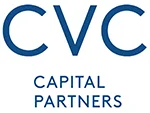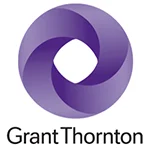 Kevin Dinino |
Proper preparation for a seamless listing and a successful start as a new public company begins with a comprehensive communications strategy developed with a company’s target audiences in mind. This is vital in order to account for the different, critical phases of an IPO and to effectively deliver key messaging to the public. Consider the following steps to set your firm up for success.
Identify your audiences
The first step of a successful communications campaign is to identify and understand your target audiences. Here are a few key considerations in this area:
• What kind of investors are you targeting?
• What are their identifying characteristics?
• How will the IPO impact your current and prospective customers?
• How will you get your employees and staff involved in the process?
• How will you communicate and leverage your key stakeholders and strategic partners?
• How will you target centers of influence in your industry, such as key members of the media, bloggers or social influences?
Whether you have a pulse on all of them or not, your business has multiple target audiences and you need to effectively connect with all of them at the right time in order to ensure your IPO is successful. Every other element of your communications strategy should be developed with your specific target audiences in mind.
Develop messages for each audience
Messaging is perhaps the most crucial component of your communications strategy when preparing for an IPO. In a market environment in which investors are constantly bombarded with more and more opportunities, a company looking to enter the public market for the first time must have a clear value proposition that resonates with the public. Companies should clearly articulate their value proposition and the problems they solve, present detailed information about the management team, outline growth prospects and, most importantly, offer compelling reasons for why investors should believe in their potential.
In addition to engaging with investors, companies must work to develop a sense of trust with the public at large, centers of influence and key stakeholders. This is done in part by being transparent, forthcoming and honest when addressing potential concerns that investors may have.
This same approach should be applied to the registration statement, as this information will become public after a company files with the U.S. Securities and Exchange Commission. In addition to providing information required by the SEC — such as a description of the company’s properties and business, and details on the security to be offered for sale — a well-written registration statement will do the following:
• Showcase the company’s past performance.
• Address potential risk factors.
• Highlight the organization’s value proposition and key differentiators.
Develop a three pronged timeline
The path to an initial public offering is not a short or simple process. It can take months, or even years of preparation and planning for a company to ready itself for a listing, especially if the organization does not have the requisite resources and staffing in place for such an undertaking. As such, companies should begin to map out a timeline and develop corresponding communications strategies for each period in advance. Planning is absolutely critical with any big move or initiative and an IPO is no exception.
A suggested timeline can be broken down into the following phases:
• Pre-Filing Period (6-12 months).
• Waiting Period (3-4 months).
• Post-Filing Period (1 month).
Each of these phases includes its own set of technical and detailed deadlines and events, so a communications strategy that accounts for each will help your company stay ahead of the game.
Pre-filing period communications
A strong communications campaign during the pre-filing period can help ensure your company gets on the radar of the media, potential investors, analysts and regulators well in advance of your listing.
Your strategic communications plan should be developed as soon as the decision is made to pursue an IPO, especially if your company does not have an existing strategy in place. Before you begin to complete the required regulatory paperwork, and certainly before you position your company in front of potential investors, you want to craft the story you want to tell to connect with the investing public. Identify key spokespeople and the individual(s) who will be the face of your company going forward.
When detailing your value proposition and key differentiators, perform an analysis of your closest competitors to get a better sense of what they are doing, but to also position your organization in ways that stand out. These considerations should be part of your day-to-day communications plan, and become significantly more magnified with a potential IPO on the horizon.
Waiting period communications
During this time, your company will need to focus on regulatory requirements, receiving and responding to SEC comments and completing required documentation. This is a critical time in the filing process from an administrative and regulatory standpoint, but also an excellent time for the communications team to fine tune its strategy for media outreach, generating investor interest and ultimately for the public offering itself.
The most critical stage of the waiting period is the investor roadshow, when management will be traveling around the country to give presentations to analysts, fund managers and potential investors. There are two critical communications points to consider here:
• Have your initial efforts laid a successful groundwork prior to the roadshow?
• Does your presentation accurately reflect your company, why you are different and your plans for the future?
If your communications team did their job in the pre-filing phase, then members of these groups will already have a sense of your company’s story before you step into that first meeting. Ideally, they will have a fundamental understanding about your company’s mission, prospects for your IPO and growth potential because you’ve used the media, bloggers and other centers of influence as vehicles to communicate with the public.
Your roadshow presentation is your company’s chance to effectively communicate how you fit into the broader marketplace and why investors should believe in your firm long-term. With everything at stake in these meetings, make sure you allocate the proper time and resources to perfect this presentation so it tells your company’s story in an effective and engaging way.
Post-filing period communications
While strategic communications are critical in each phase of the IPO process, the post-filing period is often the most hectic, but no less important to the eventual success of your entrance into the public market. This is when analysts and the media will be dissecting your company top to bottom, with the hopes of uncovering the most accurate data and outlook for your stock and future growth potential.
Ahead of the post-filing period, make sure you have a designated spokesperson and that you are well-prepared with talking points and messaging for key questions that will undoubtedly be asked in media interviews. It is critical that your company spokespeople are properly media trained and know how to control the message as much as possible. This is also where you’ll want to convey the unique angles about your company’s history, leadership and approach, so the media is equipped to help set your firm apart from competitors.
Build upon positive momentum
A common communications mistake occurs when companies fail to capitalize on the work that’s been done and the positive momentum after the listing occurs. Your communications strategy should continue past the IPO to ensure your company stays relevant once the initial trading excitement fades.
Take advantage of the connections and relationships you’ve developed with reporters throughout the process. Make a point to keep them informed about key company announcements and the performance of your stock. Offer to be a resource to provide commentary on broader industry trends whenever possible. As your company grows, look to expand your media relations initiatives to target new publications and reporters.
Many of the strategies and tactics used during the IPO process can be implemented in areas such as investor marketing, earnings announcements, shareholder meetings and more as you work to fine tune your investor relations efforts going forward. The bottom line is your communications initiatives should continue long after your IPO.
Assess communications capabilities
There are many considerations when preparing for an IPO, from a communications standpoint and otherwise. When developing your company’s communications strategy, part of the process should be assessing whether or not your current team is equipped to manage the demands that come with this process.
While your internal communications and marketing teams may have handled other public relations and outreach initiatives without issue in the past, taking the company public will present an entirely new set of challenges that include working with national financial and business media, managing interview requests and developing appropriate messaging and talking points for each, as well as establishing the necessary infrastructure and processes for your investor relations program going forward.
These elements will require more time, strategy and expertise than your day-to-day communications efforts prior to the IPO, so you may want to consider a strategic partner with experience in this area to help manage your needs.
A company’s communications strategy and the messages conveyed to the public about the organization’s value proposition, leadership, past performance and growth potential, can mean the difference between a wildly successful IPO and a disappointing trading debut. If your company has plans to enter the public market in the future, make sure the implementation of a well-thought-out communications plan is a key discussion point in the boardroom with senior management and the communications team.
***
Kevin Dinino is Founder and President of KCD PR, a PR and marketing agency for leaders in the fintech, cybersecurity, B2B and the financial/professional services industries.


 Teneo is handling the initial public offering of CVC Capital Partners, one of Europe’s largest private equity firms with nearly $200B in assets under management.
Teneo is handling the initial public offering of CVC Capital Partners, one of Europe’s largest private equity firms with nearly $200B in assets under management. Brunswick Group represents Endeavor Group Holdings as it agrees to go private via its acquisition by Silver Lake technology investment firm, which is handled by Edelman Smithfield.
Brunswick Group represents Endeavor Group Holdings as it agrees to go private via its acquisition by Silver Lake technology investment firm, which is handled by Edelman Smithfield. Tod Donhauser, a nine-year veteran of Edelman, has joined H/Advisors Abernathy as managing director and head of its San Francisco office.
Tod Donhauser, a nine-year veteran of Edelman, has joined H/Advisors Abernathy as managing director and head of its San Francisco office. Intelligent Group Ltd, a Hong Kong-based financial PR firm, has priced its initial public offering of 1.9M shares at $4, which is the low end of the $4 to $5 range.
Intelligent Group Ltd, a Hong Kong-based financial PR firm, has priced its initial public offering of 1.9M shares at $4, which is the low end of the $4 to $5 range. Kekst CNC represents Grant Thornton as it sells a majority stake in its US arm to New Mountain Capital, which relies on Goldin Solutions, in what is billed as the largest PE investment in the accounting and advisory sector.
Kekst CNC represents Grant Thornton as it sells a majority stake in its US arm to New Mountain Capital, which relies on Goldin Solutions, in what is billed as the largest PE investment in the accounting and advisory sector.


 Have a comment? Send it to
Have a comment? Send it to 
No comments have been submitted for this story yet.